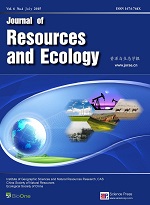Karst Ecosystem
HUANG Yuqing, YUAN Weiyuan, MO Ling, XU Guangping, ZHANG Zhongfeng, ZENG Danjuan1, HE Chengxin and GU Daxing
Dragon fruit (Hylocereus undulates) was planted in a large area of karst region in recent years. To understand whether karst drought may impact on its physiological process is important and useful for planning and management of this fruit. In this study, we contrasted with a relative species Hylocereus undatus, and set up experiment to study physiological and biochemical trait and its response to different karst soil water level deficiency, so as to understand the mechanism of H. undulates and H. undatus in adaptation to karst drought condition. The results showed that, trends of physiological and biochemical response to drought was similar between two species. With the intensive of soil water deficiency, such toxin substance as malonaldehyde (MDA) increased, but meanwhile, two protective enzymes superoxide dismutase (SOD) and peroxidases (POD) and osmotic adjustment Proline (Pro) increase as well. Under relative water content (RWC) >50% condition, the enzyme can effectively protect the cells from toxin MDA injure, and Pro can also maintain the water needs through osmotic adjustment. However, under RWC < 40% condition, protective enzymes were not enough for cleaning MDA. Biomass was largest under RWC=70%–80%, with low root shoot ratio and high aboveground biomass. Biomass significantly decreased under RWC 30%–40%, which decline by 73.28% and 73.56% in H. undulates and H. undatus respectively. Therefore, RWC=70%–80% would be an optimal soil moisture while developing dragon fruit in karst, which is favor to fruit production. Under moderate drought e.g. RWC=50%–60%, plants may regulate by metabolic process and balance unfavorable substance, but it allocated much more biomass to root, reduced the aboveground biomass, which is not advance for fruit production.
